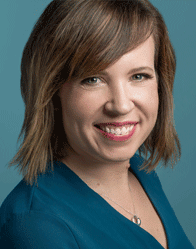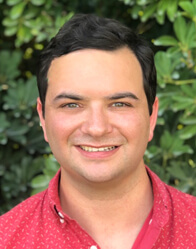Season 1 – Episode 35 – Women Faculty Members and the Tenure Process
According to a 2020 American Association of University Professors report, women in academia continue to have stubborn challenges inside the academy. In the same report, the American Association of University Professors reported that while women comprise 46.7% of full-time tenure and tenure-track faculty members at higher education institutions, the higher the rank, the lower the percentage of women. Available IPEDS data from 2020 shows the salaries for full-time female faculty members are about 81.2% of their male counterparts. Impacts from the COVID-19 pandemic continue to impact women faculty members disproportionately more than their counterparts. A Nature Medicine article from 2022 identifies how women in academia have been impacted by the pandemic, from falling behind in research publications to grant funding.
Episode Transcript
Click to expand/collapse
Darren Gaddis: From CITI Program, I’m Darren Gaddis, and this is On Campus. Today, what is the tenure process in academia, how women are specifically impacted by the tenure process, and how institutions can provide more support for women navigating the tenure process. I spoke with Kimberly A. Hamlin, the James and Beth Lewis Professor of History at Miami University, where she teaches and writes about the history of women, sex, and gender in the US. Her most recent book, Free Thinker: Sex, Suffrage, and the Extraordinary Life of Helen Hamilton Gardener, tells a remarkable story of the “fallen women” who negotiated congressional passage of the 19th Amendment. She is also the author of From Eve to Evolution: Darwin Science and Women’s Rights in Gilded Aged America.
As a reminder, this podcast says, for educational purposes only. It is not intended to provide legal advice or guidance. You should consult with your organization’s attorneys if you have questions or concerns about relevant laws and regulations discussed in this podcast. Additionally, the views expressed in this podcast are solely those of the presenter and do not represent the views of their employer. Hi, Kimberly. Thank you for joining me today.
Kimberly A. Hamlin: Hi, Darren. Thank you so much for having me.
Darren Gaddis: To get us started today, could you please describe the tenure process in academia?
Kimberly A. Hamlin: That’s a great question that I think could use a lot of clarification, especially for folks outside the Academy. So as a historian, I can speak most knowledgeably about the process for humanities professors, but I’ve also served on the college level Promotion and Tenure Committee at my university, so I have a general understanding of how it works for other fields. But the only one I’ve experienced personally is in the humanities.
So in general, professors have a five to seven year probationary period, at least that’s what it’s called at my university, the probationary period, in which to complete a major research project. For humanities folks, this is often a book or the equivalent of a book in articles, so that would be like four or five peer reviewed articles. For folks in the sciences, this would be a major grant and/or several co-authored publications of their research.
Depending on the type of institution, the research and teaching requirements may vary. Some weigh research contributions more heavily than teaching, others vice versa. My institution is based on a teacher-scholar model, so we are supposed to think about our jobs as 40% teaching, 40% scholarship, and 20% service. And this service includes both service to the university and/also to the profession at large.
In terms of timing, the tenure track period is usually five to seven years with some flexibility for an extension or two. So in general, after this five to seven year period, assistant professors prepare what’s called the dossier of their accomplishments to be evaluated first by about four external reviewers. Those are people at other universities who will write an assessment letter of the candidate. Then the whole package goes first to the candidate’s home department. If approved, onto the dean. If approved, onto the provost, and then to the university Promotion and Tenure Committee, and finally, the president and/or board of trustees for final approval. If an assistant professor is approved for tenure, they are promoted to associate professor with tenure. If they’re not approved, they have around one year to find another job and/or appeal the decision.
Darren Gaddis: And from your own experience in academia, what are some of the activities faculty members have to participate in or complete in order to gain tenure at an academic institution?
Kimberly A. Hamlin: I think for much of our conversation, it’ll be helpful to think in terms of those three buckets: research, teaching, and service. So research is perhaps the most self-explanatory, though of course, it varies widely by discipline, but that’s you do your research. For me, I go to the archives and I write things about what I see in the archives. For other folks, it’s work in the lab and grant funding. Grant funding, though, I will say is becoming increasingly important for all folks, even those of us in the humanities where there are fewer grants to apply for than in the sciences and where the grant money is much smaller, still we are increasingly being evaluated by that. So that’s the research.
And then, there’s teaching, so are you teaching new classes? How are your classes being evaluated by your students and also by your peers? Are you advising students either one-on-one for independent studies and student research projects, and also advising them kind of more broadly in terms of what classes to register for, what they might want to do after college, things like that. Also, depending on the type of institution you’re at, advising could be advising graduate students, master’s students, doctoral students either as their main advisor or as part of their dissertation or thesis committee.
And then, service I think also is something that people, especially those outside the Academy, have a hard time understanding because we have such a, I think, unique model compared to many other professions in terms of the service that faculty perform for the university, right? All of the committees, all of the things that keep the university functioning so often rely on the work of professors. So the Liberal Education Office that approves new classes, yes, there are paid staff people, but there are also professors who serve on committees to look at all the new course proposals, approve the new course proposals, suggest revisions. And then, every time the university provost or president has a new idea or initiative, this then trickles down to faculty who are supposed to make it so. So there’s a whole universe of university committee service that faculty could probably spend their whole entire day doing, so that’s a tricky balance.
And then, there’s also service to the profession, which is reviewing proposals for grants, for groups that are affiliated with you or your research, peer reviewing other people’s articles and publications and books, serving on awards committees. And for people like me, this service also increasingly has to do with public scholarship. So my university and most universities don’t really count public-facing work as research, so that counts as service. So when I write an op-ed in the Washington Post, for example, or an essay for Smithsonian Magazine based on my research, it doesn’t go in that research bucket, it counts as service. But I feel that that’s something increasingly vital that faculty have to offer, is to share our research widely, both within but also beyond folks in the Academy.
Darren Gaddis: How are women impacted by the different tenure track activities in a different manner than other faculty members?
Kimberly A. Hamlin: I will try, understanding that this is not really a one-size-fits-all answer. There are so many examples of how gendered ideologies and sometimes blatant sexism impact women and men differently on the tenure track. And I want to also say, of course, here that non-binary folks face additional challenges and that women of color are particularly impacted by the compounding oppressions of racism and sexism.
So in general, I would highlight three differences, in general, that could impact faculty members differently, and the first is evaluations. And by evaluations I mean both student evaluations, the end of semester course evaluations that universities take so seriously. And by evaluations, I also mean external review letters that you have to get during the tenure process, and also, in some cases, evaluations of grant proposals. Countless research demonstrates time and time again that students evaluate female faculty much more harshly than male faculty and also more based on their looks. And this is doubly true for women of color and especially for women of color who are teaching courses that focus on or even just vaguely mention race and/or white privilege.
And the second category, I would say, is service, and that is that women are asked to do and generally agree to do much more service than our men. And this includes service that you can easily put on your annual activity report, which is something all faculty have to do, that sort of easily recorded service, easily legible service would be that you’re serving on a committee. And this also includes service that’s less easy to quantify and less easy to explain on your annual activity report, but that nonetheless takes up a lot of time. And that’s things like students coming by your office to chat, students emailing you with a lot of questions. And of course, that is fine, and that’s one of the reasons that we are faculty is because we love to work with students. But countless studies show that students expect so much more from their female faculty in terms of time and responsiveness. “Can I stop by your office and chat for an hour about my hope streams and fears?”
“Sure.” But this is far more likely to happen for female professors than for male professors. And if we’re thinking about the tenured clock as literally a clock that is ticking all the time, right, then all that time really adds up.
The third area that I would say there is some things we could think more about in terms of gendered ideology and sometimes even blatant sexism has to do with the research. Research deadlines for tenure in terms of the timing of the clock often come at the same time that a woman’s biological clock starts ticking very loudly. Now of course, not all female faculty are interested in having children, and some non-binary folks are also interested in having children, so this is not a one-size-fits-all answer. But for many cisgender women who are interested in having children, this is a real struggle, in that you hear both clocks, the tenure clock in the biological clock, tick, tick, ticking all the time. And it’s a challenge that they have, in many cases, the same deadline.
The other thing that I would say about research is that there are countless, countless studies showing that there are so many gendered biases implicit embedded in the research process. And there, I mean things like research where the primary author’s name seems female to folks is far, far less likely to be cited by other peers and scholars. And other research shows that women who receive, revise, and resubmit, so when you submit either an article or a grant, you can be accepted, you can get a revise and resubmit, or you can be denied. And research shows that women are far, far less likely to revise and resubmit than are their male colleagues.
For example, I once organized a panel on things like of this nature for the History of Science Society. I was co-chair of their Women’s Caucus for a while, and one of my colleagues on the Women’s Caucus for the HSS found that men almost always revise and resubmit. In some cases, they don’t even revise, they just resubmit as if to say, “I’m sorry you didn’t realize how awesome my proposal or article was in the first place. Here it is again.” But women are far less likely to revise and resubmit both for articles and for grant funding, so that also impacts research.
Darren Gaddis: In what ways can other faculty members better support women within the tenure track process?
Kimberly A. Hamlin: That’s a great question, and I really appreciate that you are asking this and that you are asking it in this way. And I say that because I think one of the great ironies in diversity work is that the people who are most likely to be affected by the structural biases are the ones then also put on the committees to fix these structural biases. So thank you for kind of reframing that in your question.
And I would say two things, one, I would say it’s not always so much that male counterparts could better support female faculty, although sometimes it is. But I think the bigger issue is that university structures and traditions need to change. But in terms of your specific question about male counterparts, I would say step one is to be mindful of your privilege and to be mindful that many women, especially women who are mothers, are balancing tasks that many of their male colleagues, especially their older male colleagues, can really only vaguely imagine.
So just to give one personal example, during the pandemic, I had a senior male colleague foist a huge service burden onto me. He was the chair of the committee and I was just on it. And he basically said, “Hey, Kimberly, can you just do this because I am “so busy” with my kitchen remodel.” Meanwhile, here I am homeschooling basically a first and third grader for 18 months straight while doing all the other normal jobs I’m supposed to be doing.
So every woman faculty member could tell you a hundred stories like that, so that I would say would be step one, is just kind of be mindful of the privilege that you may have. And this goes for everyone regardless of gender and race. And then, in terms of a more practical idea, I would say be willing to negotiate deadlines to allow women, and really everyone, more flexibility. So say, “I would like this by Friday at 4:00. Does that work for you?” And then, your colleague could say, “Well, actually, that’s a day where I have X, Y, and Z. Could I get it to you Saturday by noon?” So a little more flexibility and conversation regarding deadlines.
And then I would say, and I see this a little bit at my university, which I think is a great move, the move to maybe not scheduling major meetings and events, or at least not scheduling all major meetings and events in the 4:00-6:00 PM window when many working women and many working parents are starting the so-called second shift at home.
Darren Gaddis: How can institutions provide more support to women navigating the tenure track process?
Kimberly A. Hamlin: There’s three things I would suggest, and I would say the most important is really enhancing the peer support in both formal and informal opportunities for mentorship. And this is something that’s very uneven in my experience across universities or really even across departments, so to recognize the importance of mentorship and to reward it. So by that I mean make it something that is recognized and rewarded as service that counts, something you can write on your annual activities report and have people understand that this sort of service is very meaningful and important and also time consuming. So that’s step one, provide more opportunities for formal and informal mentorship and recognize it as real service.
The second thing I would say, and this again is something that many institutions have, but it’s very uneven in my experience, and that’s timing and flexibility with the tenure clock. So for example, different universities have different policies with regard to when and for what you can request extensions. So can you request a one-year extension if you have a child? Can you request it twice if you have two children? Can you request an extension because of pandemic-related childcare or other caregiving work that you may have been called to do during the pandemic? Things like that. So there are models of universities that do this really well and models of universities that do it less well.
And the third thing I would say, and this is kind of the great mystery of mysteries to me, is universities, I think, have to really reimagine their relationship to the student evaluations. There is not one research study of student evaluations that I’ve ever seen that says, “Wow, this is a really great measure of teaching effectiveness and student learning.” To the contrary, nearly every research study I’ve ever seen shows all the ways in which end-of-semester student evaluations are flawed, are rife for blatant sexism and racism, and really have nothing to do with how well students are learning and/or how well instructors are teaching. And yet, we can’t seem to break the habit of them in our university structures and policies. So if universities could be much more mindful about the inherent flaws in end-of-semester student evaluations and really de-center them in the promotion and tenure process, I think that would go a long way towards making more equitable tenure and promotion processes for all faculty.
Darren Gaddis: And to your knowledge, what resources are publicly available for women who aren’t navigating the tenure track process?
Kimberly A. Hamlin: Yes. So this is something where a quick Google search would come up with many books, many websites, many articles. So I think that is, again, not a one-size-fits-all answer because there’s so many varieties of women’s experiences that I would suggest women do some Googling to see which works best for them. For me personally, I found Rena Seltzer’s The Coach’s Guide really helpful, and that’s a book and also kind of a coaching service that she offers. Her book is called The Coach’s Guide for Women Professors: Who Want a Successful Career and a Well-Balanced Life. But that may not be the best fit for everyone, so I would encourage folks to kind of look around. And then, I would also encourage people to look on their universities and see who are the people that seem to be doing a great job or who are really advocating for women and reach out to them to establish relationships, either just information sharing or more formal networking and mentorship possibilities.
Darren Gaddis: What else should we know about women in academia in the tenure track process?
Kimberly A. Hamlin: Well, I think I would love for folks to think about how important it is for universities and also for our public life in general in a democracy that our faculty members be as diverse as our society and the communities in which our universities are housed. So I think it should be a real priority for everyone who is interested in universities and university life to make having those diverse faculty a real priority.
And the second thing I would say is this is a conversation that doesn’t stop at tenure. And in fact, maybe the worst part about the embedded biases in the system do not even surface until after tenure. So the numbers of women, the numbers of women of color, the numbers of people of color who are promoted to full professor are even lower than who are tenured. So the sort of inequities get more stark as one goes along the process. So I think we also maybe could have a subsequent conversation about what it means to have a diverse cohort of full professors and how important that is for university life and really for a well-educated citizenry.
Darren Gaddis: Kimberly, thank you again.
Kimberly A. Hamlin: Thank you so much for having me. I really appreciate the opportunity to speak with you.
Darren Gaddis:
Be sure to follow, like, and subscribe to On Campus with CITI Program to stay in the know. If you enjoyed this podcast, you might also be interested in CITI Program’s other podcasts On Tech Ethics and On Research. You can listen to all of CITI Program’s podcasts on Apple Podcasts, Spotify, and other streaming services. I also invite you to review our content offerings regularly, as we are continually adding new courses and webinars that may be of interest to you. All of our content is available to you anytime through organizational and individual subscriptions. You may also be interested in CITI Program’s AI in Higher Education: An Overview webinar. Please visit the CITI Program’s website to learn more about all of our offerings.
How to Listen and Subscribe to the Podcast
You can find On Campus with CITI Program available from several of the most popular podcast services. Subscribe on your favorite platform to receive updates when episodes are newly released. You can also subscribe to this podcast, by pasting “https://feeds.buzzsprout.com/1896915.rss” into your your podcast apps.
Recent Episodes
- Season 1 – Episode 34: Changing Landscape of Adult Learners
- Season 1 – Episode 33: Introducing CITI Program’s New Podcast: On Tech Ethics
- Season 1 – Episode 32: The Impacts of Grading: Part 2
- Season 1 – Episode 31: The Impacts of Grading: Part 1
Meet the Guest

Kimberly Hamlin, PhD – Miami University
Kimberly A. Hamlin is the James and Beth Lewis Professor of History at Miami University (OH) where she teaches and writes about the history of women, sex, and gender in the U.S. This interview is based on Hamlin’s 2021 Chronicle essay “Why Are There So Few Women Full Professors?”
Meet the Host

Darren Gaddis, Host, On Campus Podcast – CITI Program
He is the host of the CITI Program’s higher education podcast. Mr. Gaddis received his BA from University of North Florida, MA from The George Washington University, and is currently a doctoral student at Florida State University.








